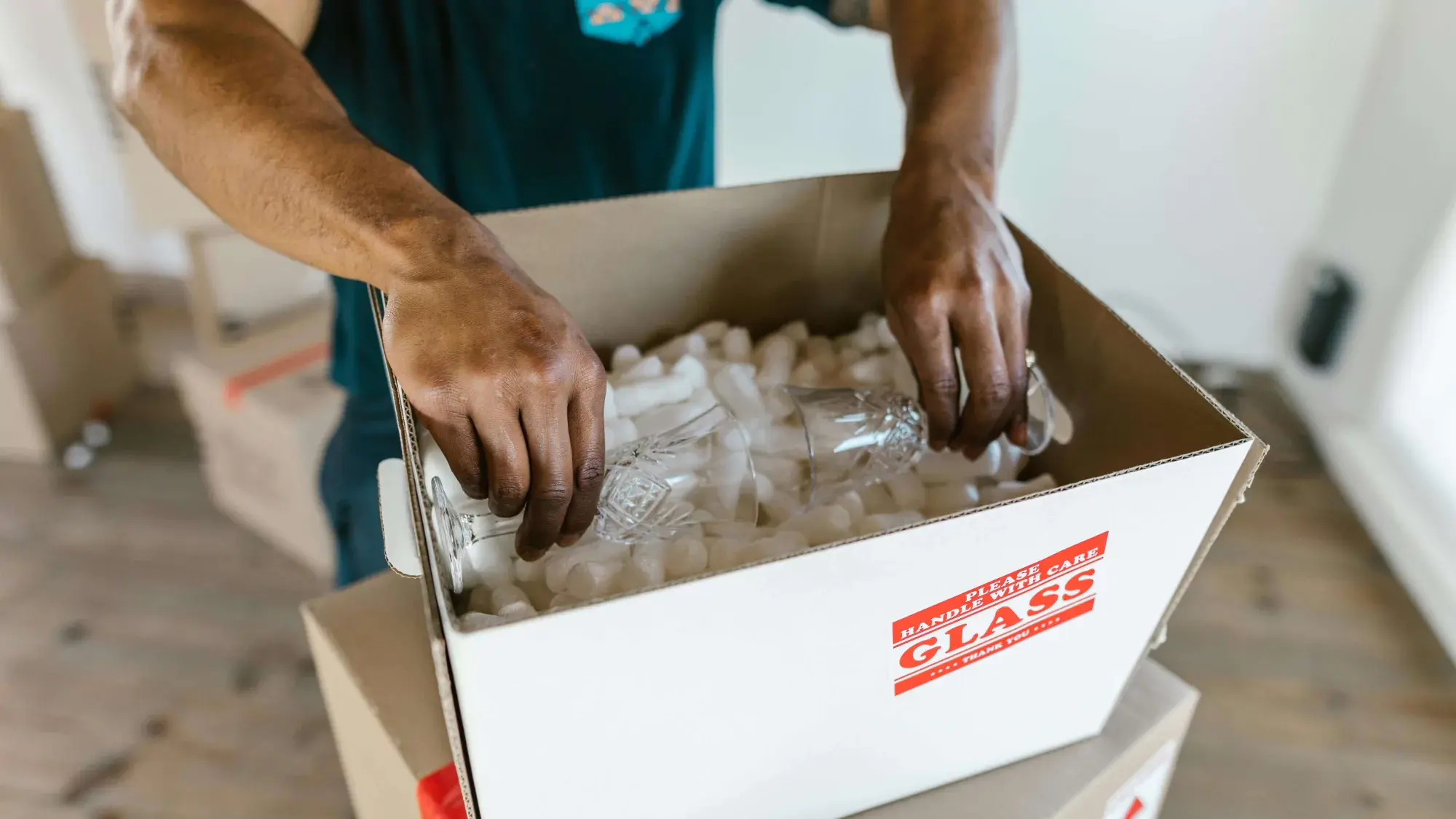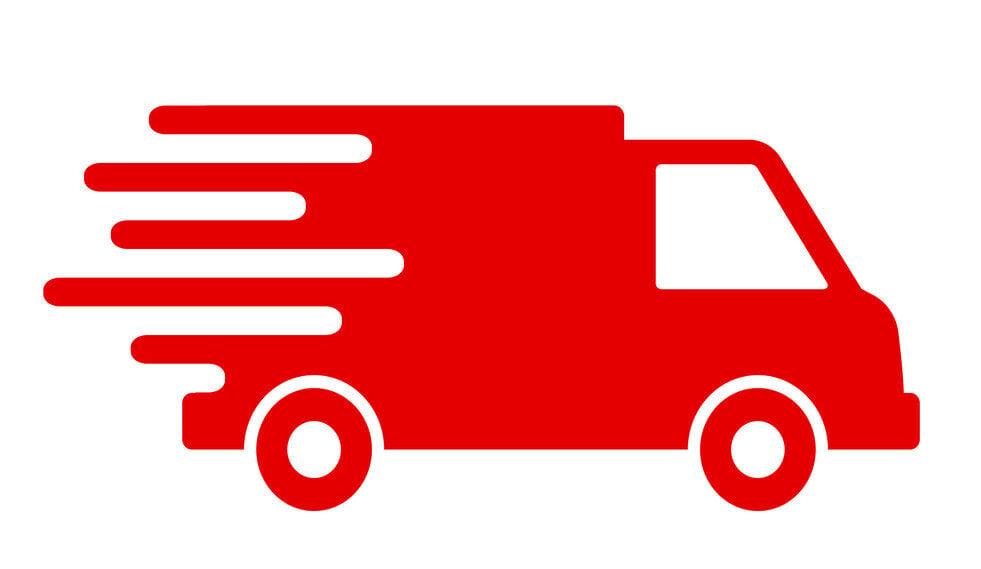
Effective outbound freight packaging is essential for preventing damage and minimizing losses during transit. Businesses face substantial costs when goods are damaged in shipping: think replacement expenses, customer dissatisfaction, and even supply chain disruptions.
Fortunately, proper packaging is a simple yet effective way to safeguard your goods and your business. By taking the right steps to protect your shipments, you can ensure safe arrival, minimize damage, and reduce costs.
Know Your Freight: A Guide to Safe and Efficient Packaging
Understanding your freight is the first step towards effective outbound packaging. Different goods have varying requirements, and recognizing these nuances is crucial for damage prevention. Let's explore the diverse world of shipped goods and their unique needs:
Categories of Commonly Shipped Goods:
From delicate electronics to robust industrial machinery, the variety of goods shipped is vast. Common categories include:
-
Fragile items: These require specialized packaging to prevent breakage, including electronics, glassware, and ceramics.
-
Perishable goods: Food, pharmaceuticals, and plants need temperature-controlled environments and protective measures to maintain freshness and quality.
-
Hazardous materials: Chemicals, flammable liquids, and other hazardous substances demand stringent packaging and labeling to ensure safety during transport.
-
Heavy and oversized cargo: Large machinery, construction equipment, and vehicles require specialized handling and securement to prevent shifting and damage.
Packaging Requirements:
Each type of good demands specific packaging considerations:
-
Fragile items: Ample cushioning, void fill, and sturdy outer containers are essential to absorb shocks and prevent movement.
-
Perishable goods: Insulated packaging, temperature-controlled containers, and proper ventilation ensure optimal conditions during transit.
-
Hazardous materials: UN-certified packaging, clear labeling, and adherence to regulations are mandatory for safe transportation.
-
Heavy and oversized cargo: Robust crating, securement straps, and proper weight distribution prevent shifting and damage during transit.
Common Causes of Damage:
Understanding the common causes of damage helps in proactive prevention:
-
Impact and vibration: Rough handling, potholes, and vibrations during transit can cause damage, especially to fragile items.
-
Compression: Stacking heavy items on top of lighter ones can lead to crushing and deformation.
-
Moisture and temperature fluctuations: Exposure to moisture, extreme temperatures, and humidity can damage sensitive goods.
-
Improper handling: Incorrect loading, unloading, and stacking can cause damage at various stages of transit.
By understanding the nature of your freight and potential risks, you can make informed decisions about packaging materials and techniques, ensuring your goods reach their destination in optimal condition.
Packaging Materials and Best Practices for Outbound Shipping
Choosing the right packaging materials is crucial for protecting your freight during transit. Each material offers unique benefits and is suited for specific applications. Failing to select the correct materials can lead to damaged goods, increased costs, and unhappy customers. Let's explore some common packaging materials and best practices for their use:
Corrugated Cardboard Boxes
The workhorse of the packaging industry, corrugated boxes are versatile and cost-effective. Their strength and durability make them suitable for a wide range of goods, from books and clothing to small appliances and electronics.
-
Choose the right box strength: This is crucial! Consider the weight and fragility of your items. Box strength is measured by bursting strength (resistance to puncture) and edge crush test (resistance to stacking pressure). Heavier items need boxes with higher ECT ratings.
-
Use proper sealing techniques: The "H taping method" (applying tape across all seams where the flaps meet) ensures the box remains securely closed during transit. Reinforce corners and edges for added strength.
-
Consider inner packaging: For fragile items, use inner boxes, dividers, or inserts for added protection and to prevent movement within the main box.
Pallets
Pallets provide a stable base for stacking and transporting goods, facilitating efficient handling with forklifts and pallet jacks. They are essential for large shipments and heavy items.
-
Choose the right pallet material: Wood is common and affordable, but plastic pallets are more durable and hygienic, while metal pallets offer the highest strength. Consider the weight, nature of the goods, and potential exposure to moisture or contaminants.
-
Inspect your pallets: Ensure pallets are in good condition and free from damage, splinters, or protruding nails that could damage goods or injure workers.
-
Secure your load: To maximize stability, stack goods securely on the pallet using appropriate stacking patterns (like column stacking or interlocked stacking). Use load-securing methods like stretch wrap, banding, or corner boards to prevent shifting during transit.
Dunnage
Dunnage refers to the protective and cushioning materials used to fill empty spaces within a package and prevent the movement of goods during transit. It's essential for preventing damage caused by shifting and impact.
-
Choose the right dunnage material: Options abound! Air pillows are lightweight and provide good cushioning, bubble wrap offers excellent protection for fragile items, and foam peanuts are a cost-effective filler. Consider the fragility of the goods and the level of protection required.
-
Fill void spaces effectively: Use enough dunnage to fill all void spaces and prevent movement, but avoid overfilling, which can cause excessive pressure on the package and potentially damage the contents.
-
Consider sustainability: Opt for environmentally friendly dunnage options, such as biodegradable packing peanuts, recycled paper, or air pillows made from recycled materials.
Protective Packaging
Protective packaging encompasses various materials used to safeguard goods from specific hazards, such as moisture, impact, and static electricity.
-
Protect against moisture: Use moisture-resistant barriers, such as plastic wrap, shrink wrap, or desiccants, for goods susceptible to moisture damage. This is crucial for electronics, documents, and certain food products.
-
Cushion against impact: Employ cushioning materials, such as foam inserts, bubble wrap, or corrugated padding, to protect fragile items from impact and vibration during transit.
-
Prevent static damage: Use anti-static packaging, such as conductive bags or foam, for electronic components and sensitive equipment to prevent damage from static electricity.
Labels and Markings
Clear and accurate labeling is essential for proper handling and identification of goods throughout the supply chain. Proper labeling can prevent delays, misrouting, and improper handling.
-
Use durable labels: Choose labels that can withstand the rigors of transit, including exposure to moisture, abrasion, and temperature fluctuations. Consider using weatherproof labels or printing directly onto the packaging.
-
Include essential information: Clearly mark packages with the shipping address, delivery address, contents, weight, and handling instructions (e.g., "Fragile," "This Side Up"). This information helps ensure proper handling and prevents delays.
-
Use technology for efficiency: Consider using barcodes or QR codes for efficient tracking and identification throughout the supply chain. These technologies can help streamline warehouse operations and improve delivery accuracy.
Cost-Saving Strategies in Packaging
Packaging costs can significantly impact your bottom line, but strategic choices can lead to substantial savings. Here's how to optimize your packaging process for cost-efficiency:
-
Optimize package size and weight: Don't pay to ship air! Using the right-sized box and minimizing unnecessary packaging materials reduces dimensional weight, a key factor in shipping costs. Consider using custom-sized boxes or offering a variety of box sizes to accommodate different orders. Lightweight packaging materials can also contribute to significant savings over time.
-
Embrace sustainable materials: Sustainable packaging materials are often more cost-effective in the long run. Recycled and biodegradable options can be cheaper than traditional materials and may qualify for environmental incentives or discounts. Plus, eco-friendly practices enhance your brand image and appeal to environmentally conscious customers.
-
Negotiate with suppliers: Building strong relationships with packaging suppliers can open doors to discounts and favorable pricing. Leverage your purchasing power by consolidating orders, committing to long-term contracts, or exploring alternative suppliers. Don't hesitate to negotiate prices and explore different options to find the best value.
-
Invest in automation: Automated packaging solutions can significantly reduce labor costs and improve efficiency. Automated systems can handle tasks like box erecting, product placement, void fill, and label application, freeing up human workers for more complex tasks. While the initial investment may seem significant, the long-term cost savings and productivity gains can be substantial.
The Power of Packaging: Protect Your Goods and Boost Your Bottom Line
Effective outbound freight packaging is more than just putting products in a box—it's a strategic investment that protects your goods, enhances customer satisfaction, and strengthens your bottom line. By implementing a comprehensive packaging strategy that encompasses the right materials, techniques, and technologies, you can significantly reduce damage, minimize costs, and optimize your entire shipping process.
Customodal is dedicated to optimizing your supply chain operations. With years of industry expertise and a commitment to innovation, we offer tailored solutions to businesses of all sizes, helping them navigate the complexities of logistics with ease. Our team of specialists analyzes your products, shipping requirements, and budget constraints to recommend the most efficient packaging solutions.
Whether it's selecting the right materials, designing custom packaging, or optimizing package sizes, we ensure that every shipment is packed in the most cost-effective and environmentally friendly manner possible.
Ready to revolutionize your packaging processes? Get in touch with Customodal today and discover how our tailored solutions can transform your supply chain operations.





